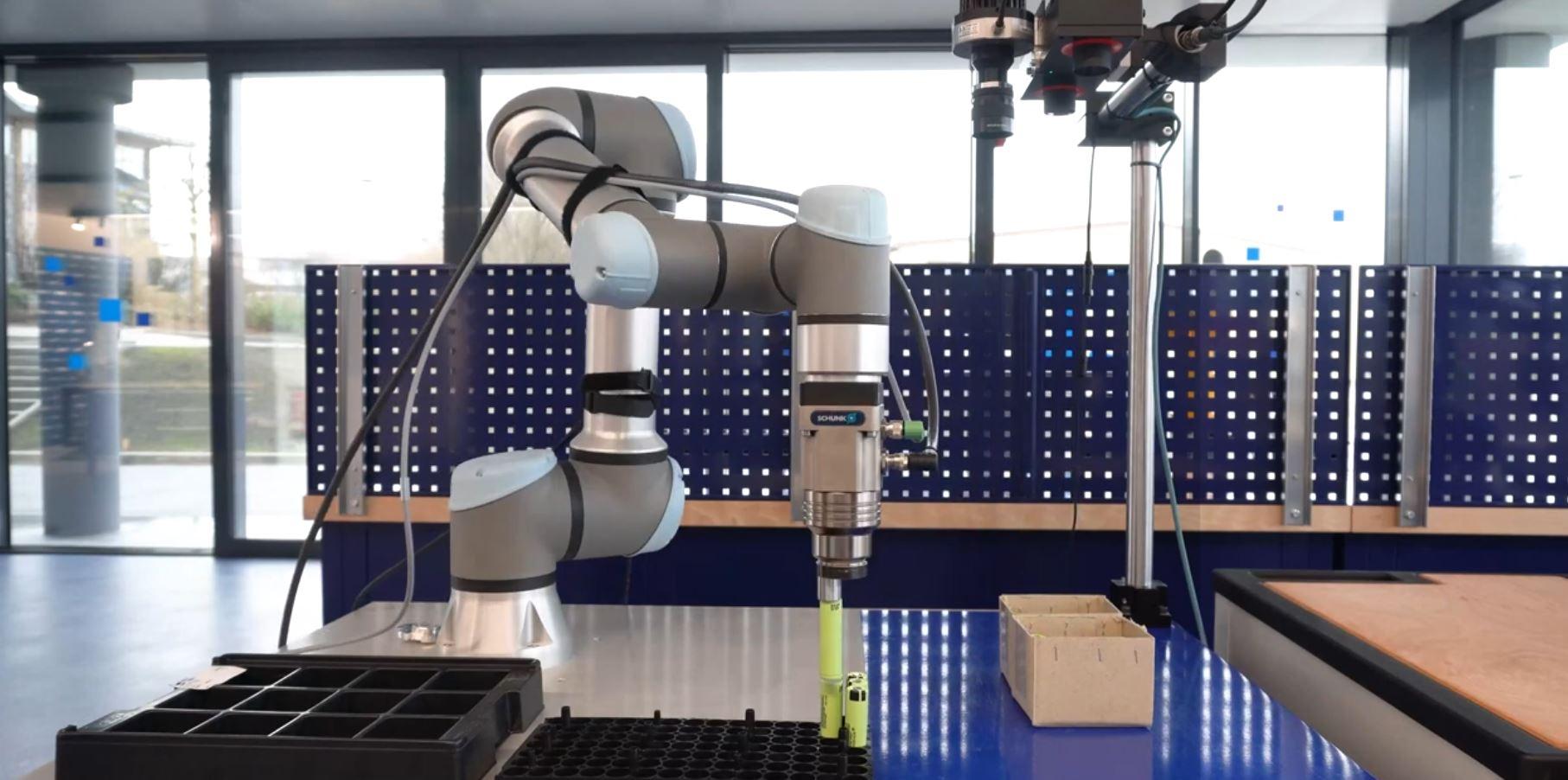 1 / 5
1 / 5Pick & Place-Roboter im 3-Schichtbetrieb
Hardwarepreis:
ROI
6
Monate
Präzision
0.5
mm
Projektkosten
22.000
EUR
Kosteneffiziente Automatisierung mit robolink: Optimierung der Spritzgussproduktion
Automatisierung ist für Industrieunternehmen entscheidend, die unter zunehmendem Druck stehen, Arbeitsabläufe zu optimieren und Konsistenz sicherzustellen. Bei igus wurde der robolink Roboterarm in eine Spritzgussanlage integriert, um die Einfügung von Kunststoff-Kugelkalotten zu automatisieren. Mit einer Präzision von 0,5 mm und einer Geschwindigkeit von 0,25 m/s ersetzt die Robotik manuelle Prozesse, steigert dadurch die Produktivität und Produktqualität und entlastet Mitarbeitende von monotonen Aufgaben.
Was ist die Anwendung?
Der robolink Roboter wird im Spritzguss eingesetzt, um die Platzierung von Kugelkalotten in Maschinen zu automatisieren, präzises Umspritzen auszuführen und den Prozess effizient über drei Schichten hinweg zu wiederholen. So werden jährlich 250.000 Teile produziert.
Welche Vorteile bietet die Lösung?
Gesteigerte Produktivität: Arbeitet kontinuierlich, auch während Mitarbeitendenpausen.
Verbesserte Qualität: Minimiert Fehler, die durch Ermüdung bei repetitiver manueller Arbeit entstehen.
Niedrige Investitionskosten: Amortisation innerhalb von etwa vier Monaten.
Welche Vorteile bietet der Roboter?
Der robolink Roboterarm bietet eine kosteneffiziente und leistungsstarke Lösung:
Einfache Bedienung: Plug-and-Play-System mit intuitiver Steuerung, das wenig Schulung erfordert.
Wartungsarm: Triboplastik sorgt für trockenen Betrieb und spart Schmierkosten.
Flexibilität: Mitarbeitende können neue Bewegungsabläufe ohne Programmierkenntnisse lehren.
Ermöglichung von Automatisierung für KMU durch zugängliche Technologie
Der robolink Roboterarm zeigt, dass Automatisierung auch für kleine und mittelständische Unternehmen zu geringen Kosten und Risiken erreichbar ist. Mit einfach zu bedienender Technologie, reduzierten Wartungskosten und Mitarbeiter-orientierter Schulung demonstriert igus, wie Robotik die Produktivität steigern kann, ohne die Rolle der Mitarbeitenden zu beeinträchtigen – eine Automatisierungslösung, die sowohl wirtschaftlich als auch unterstützend ist.
3 Komponenten










